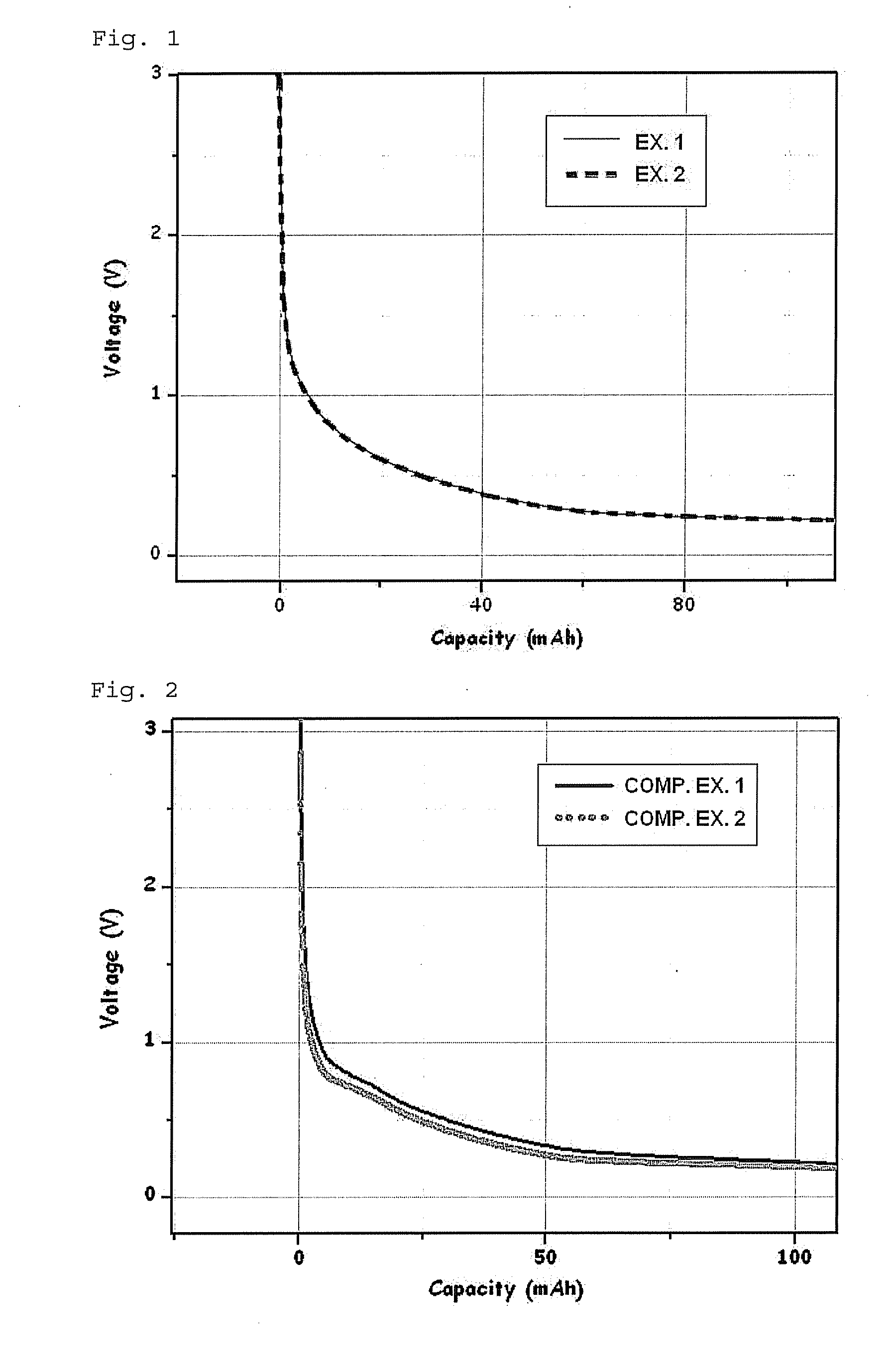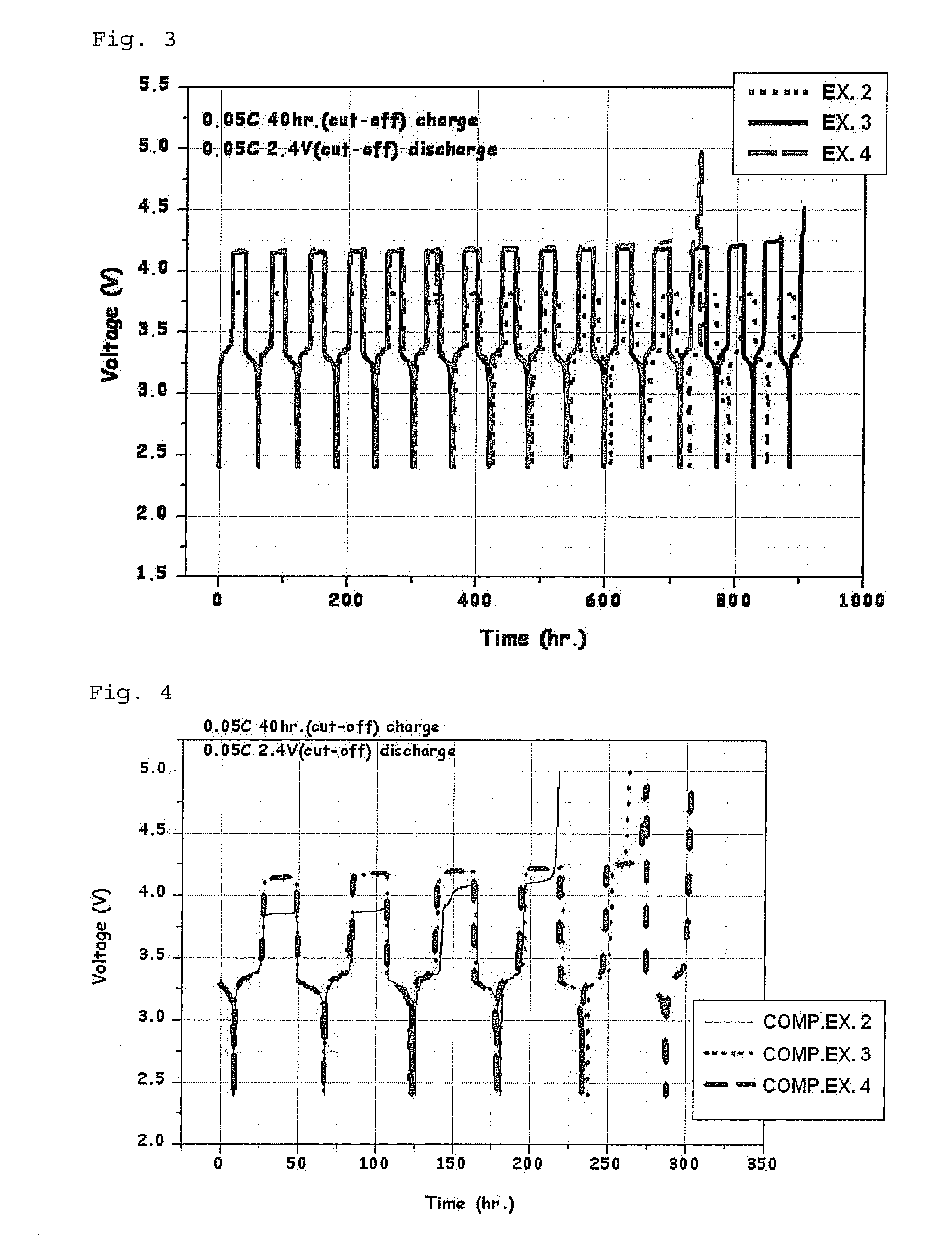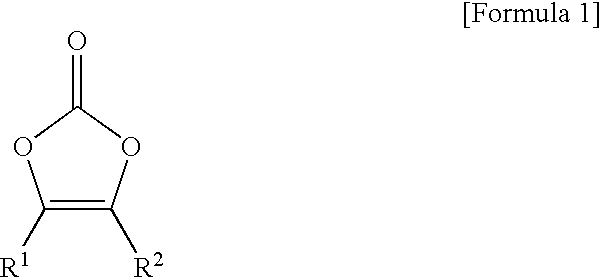Inhibitor of reduction of life cycle of redox shuttle additive and non-aqueous electrolyte and secondary battery comprising the same
a technology of additive and non-aqueous electrolyte, which is applied in the direction of non-aqueous electrolyte cells, sustainable manufacturing/processing, and final product manufacturing, etc., can solve the problems of increasing the temperature of cathodes and anodes, and increasing the capacity density of batteries. , to inhibit the reduction of life cycle, the effect of suppressing a side reaction
- Summary
- Abstract
- Description
- Claims
- Application Information
AI Technical Summary
Benefits of technology
Problems solved by technology
Method used
Image
Examples
example 1
[0046] LiPF6 was dissolved to a concentration of 1M in a non-aqueous solvent having a composition of ethylene carbonate (EC): ethyl methyl carbonate (EMC)=1: 2(v: v). Then, 1 part by weight of vinylene carbonate and 3 parts by weight of 1,3-propene sultone were added to 100 parts by weight of the solution, thus preparing an electrolyte.
[0047] 90 parts by weight of LiFePO4 as a cathode active material, 5 parts by weight of acetylene black as a conducting agent, and 5 parts by weight of PVDF as a binder, were mixed with each other, and then added to NMP (N-methyl-2-pyrrolidone), to form cathode slurry. The slurry was applied on an aluminum (Al) collector and dried, thus preparing a cathode.
[0048] 95 parts by weight of artificial graphite as an anode active material, and 5 parts by weight of PVDF as a binder were added to NMP to form anode slurry, which was then applied on a copper (Cu) collector and dried, thereby preparing an anode.
[0049] A polyolefin-based separator was interpose...
example 2
[0050] A battery was fabricated in the same manner as in Example 1, except that the electrolyte was prepared by dissolving LiPF6 to a concentration of 1 M in a non-aqueous solvent having a composition of ethylene carbonate (EC): ethyl methyl carbonate (EMC)=1: 2 (v: v), adding 1 parts by weight of vinylene carbonate and 3 parts by weight of 1,3-propene sultone to 100 parts by weight of the solution, and adding 2 parts by weight of 2,5-ditertbutyl-1,4-dimethoxybenzene as a redox shuttle additive thereto.
example 3
[0051] A battery was fabricated in the same manner as in Example 1, except that the electrolyte was prepared by dissolving LiPF6 to a concentration of 1 M in a non-aqueous solvent having a composition of ethylene carbonate (EC): ethyl methyl carbonate (EMC)=1: 2 (v: v), adding 1 part by weight of vinylene carbonate and 3 parts by weight of 1,3-propene sultone to 100 parts by weight of the solution, and adding 5 parts by weight of 1,4-difluoro-2,5-dimethoxybenzene as a redox shuttle additive thereto.
PUM
| Property | Measurement | Unit |
|---|---|---|
| Percent by mass | aaaaa | aaaaa |
| Percent by mass | aaaaa | aaaaa |
| Percent by mass | aaaaa | aaaaa |
Abstract
Description
Claims
Application Information
 Login to View More
Login to View More - R&D
- Intellectual Property
- Life Sciences
- Materials
- Tech Scout
- Unparalleled Data Quality
- Higher Quality Content
- 60% Fewer Hallucinations
Browse by: Latest US Patents, China's latest patents, Technical Efficacy Thesaurus, Application Domain, Technology Topic, Popular Technical Reports.
© 2025 PatSnap. All rights reserved.Legal|Privacy policy|Modern Slavery Act Transparency Statement|Sitemap|About US| Contact US: help@patsnap.com



